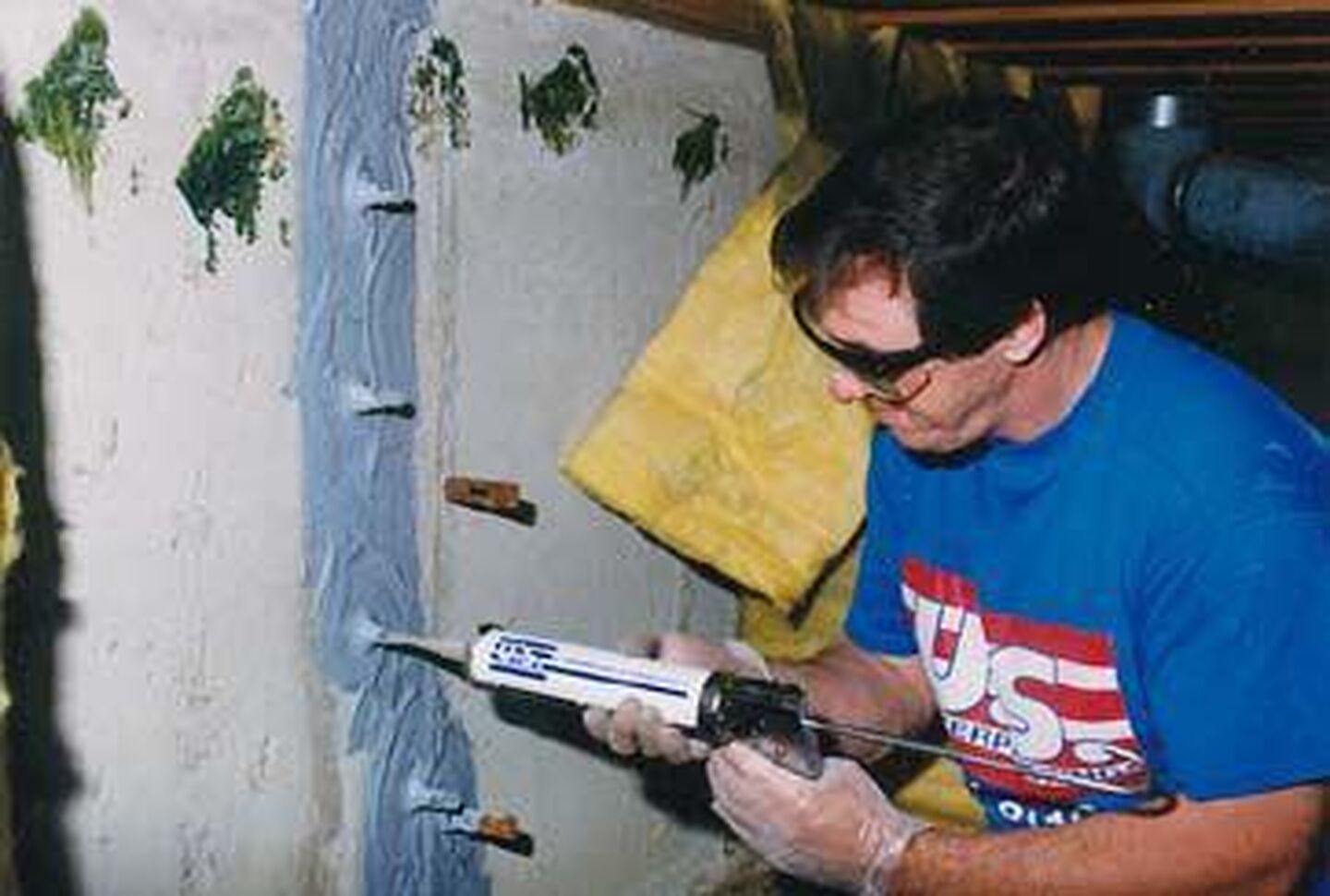Want a Real Seal for a Seeping Crack? Use Polyurethane not Epoxy

A non-structural crack in the wall of a poured concrete foundation is the most common source of basement seepage and has been for a long time. For years, basement waterproofing experts have known that cracks are a plague on the houses of homeowners everywhere and that offering a process to create a real seal that is both effective and permanent is the best weapon in the war against seepage.
Of course, just as in any other industry, these products and processes in basement waterproofing have evolved and improved as technology has changed – otherwise we’d still be like Flintstone Waterproofing, excavating with dinosaurs and pushing rocks up against cracks in the wall.
For example, early basement waterproofing contractors used sodium bentonite clay in an excavation or via injection to seal wall cracks from the outside. This was an effective process and still is in certain circumstances today but requires knowledge and precision and is often done badly by inexperienced installers.
Next came crack injection with epoxy. The two-part filler/sealer would be forced into the crack where it would cure and harden, sealing the crack against water. Epoxy worked pretty well but, because it was a static material, it didn’t necessarily fill the crack completely nor did it form a seal on the exterior.
Most importantly, though, is the fact that cured epoxy is a rigid material and when the type of foundation movement that caused the crack continued it would often break the epoxy and once again admit seepage into the basement.
Today, the state-of-the-art material for filling and sealing seeping cracks in a poured concrete wall is expanding polyurethane and there are a number of reasons why it is better than epoxy.
How Expanding Polyurethane Creates a Real Seal in Basement Wall Cracks
Polyurethane is a modern plastic that exists in a number of variations and is used for many products and applications.
Expanding polyurethane that is used to fill and seal basement wall cracks is a formula that “foams” to completely fill the crack into which it is injected and, important for waterproofing purposes, resists water and can be used in actively seeping cracks.
The chemical reaction that creates the expansion is quite powerful and the polyurethane can actually push against exterior soil with sufficient force to allow the material to expand slightly beyond the outer edge of the wall and form a small ”positive side” barrier along the surface of the crack.
Most important, however, is the nature of the cured polyurethane. For all its strength, the material remains flexible when it cures and that means that minor foundation movement of the cracked wall will not cause the polyurethane to crack or break and the crack will remain sealed. Considering that it was foundation movement that caused the crack in the first place, it’s safe to assume that such movement is likely to continue and that the use of expanding polyurethane is the only assurance of a permanent repair to the damaged wall.
So, if you’re looking for a real seal for a seeping wall crack, expanding polyurethane is the only way to go.
At U.S. Waterproofing, we are firm believers in keeping up with technological developments in our industry so we use only expanding polyurethane in our crack repair work. When we started out in business in 1957 we employed sodium bentonite clay to fill cracks from the exterior (and still do when interior repairs aren’t feasible) and later moved to internal crack repair with epoxy as it became the industry standard. Based on our research, we were an early adopter of polyurethane technology and our list of more than 300,000 satisfied customers, many of whom suffered seepage from wall cracks, is testimony to the soundness of our decision. Why not ask for our free advice?
Want to know more about why expanding polyurethane is the best material to create a real seal in a seeping wall crack? Please post your questions in the Comments box below.




